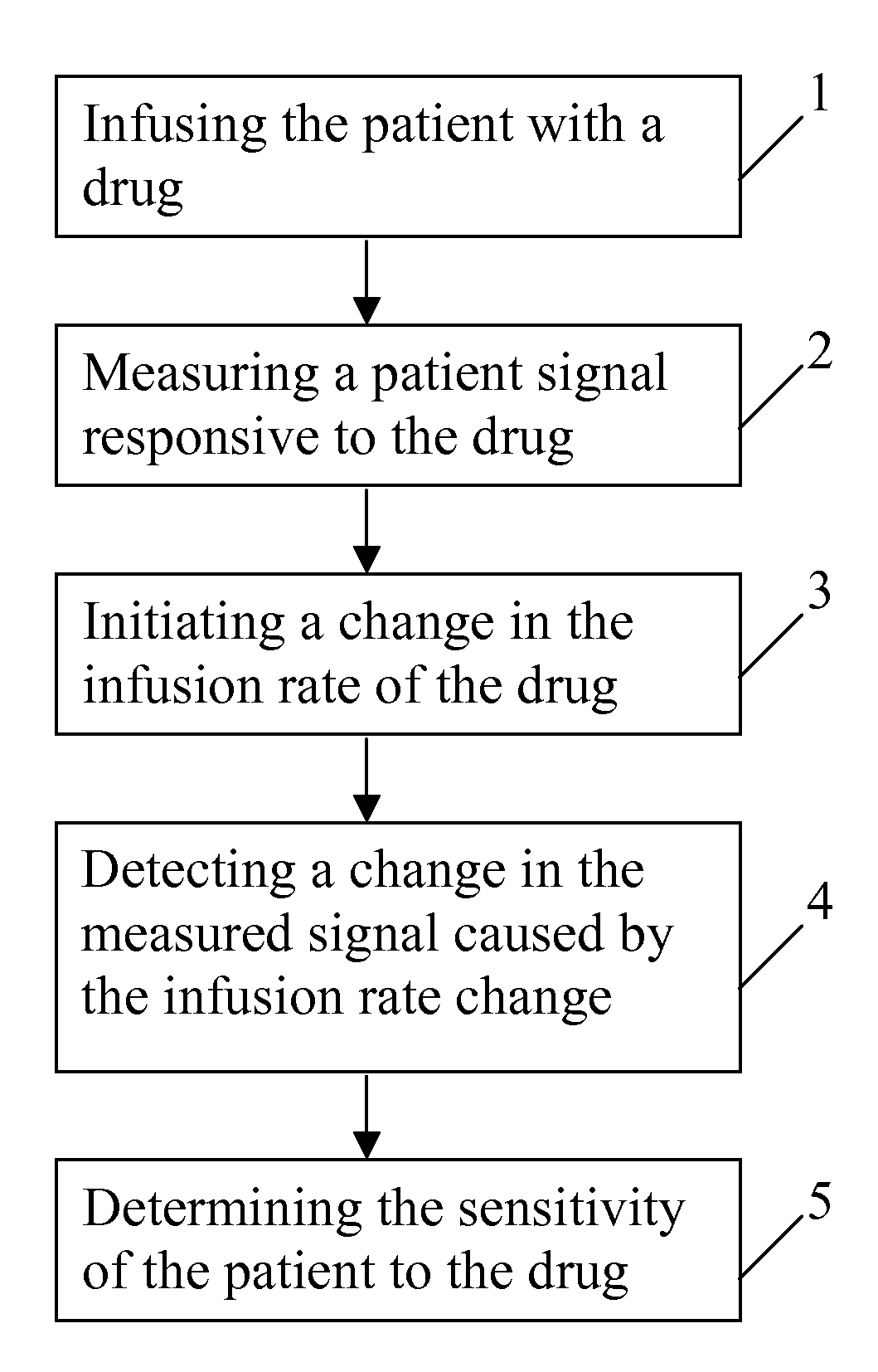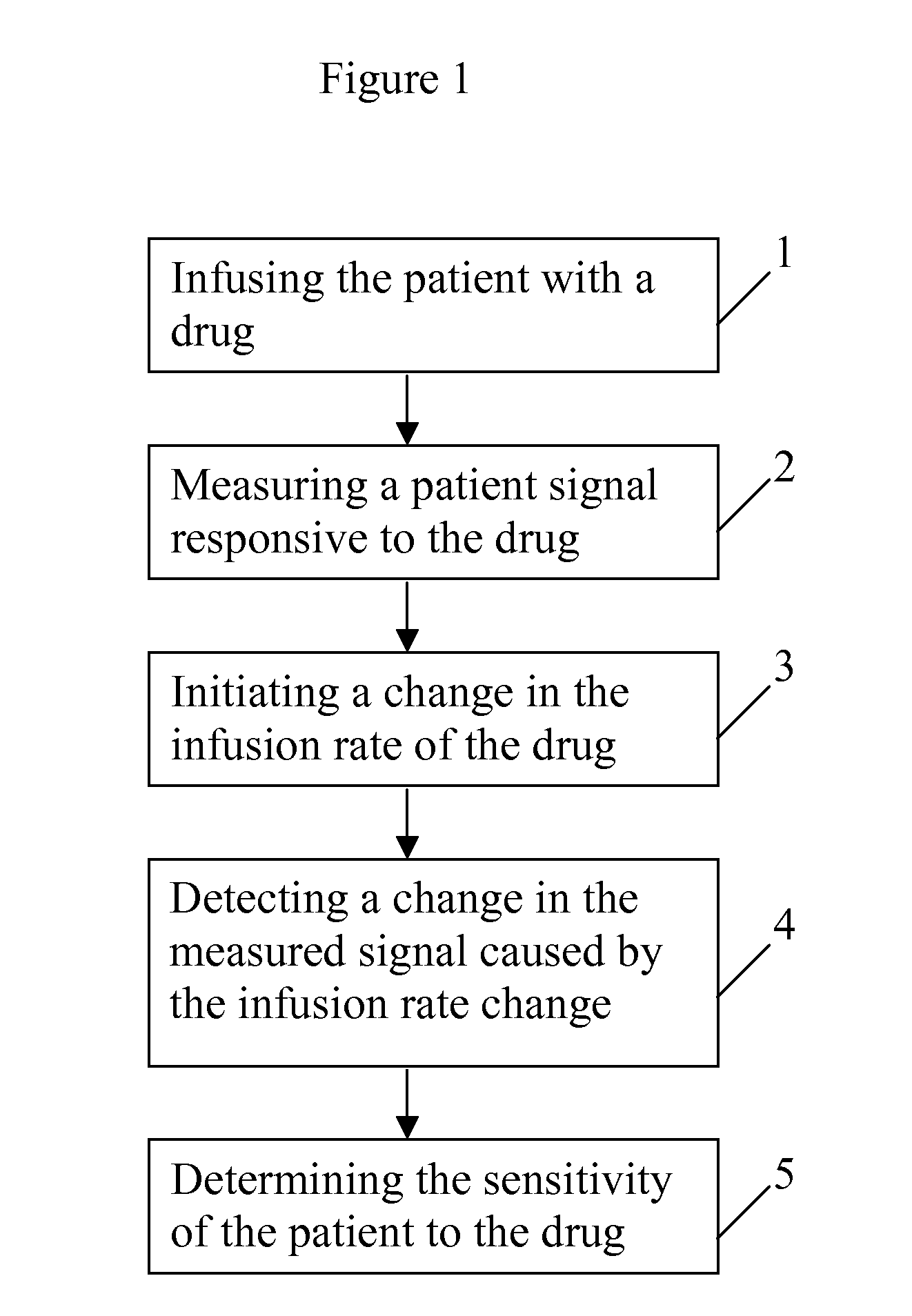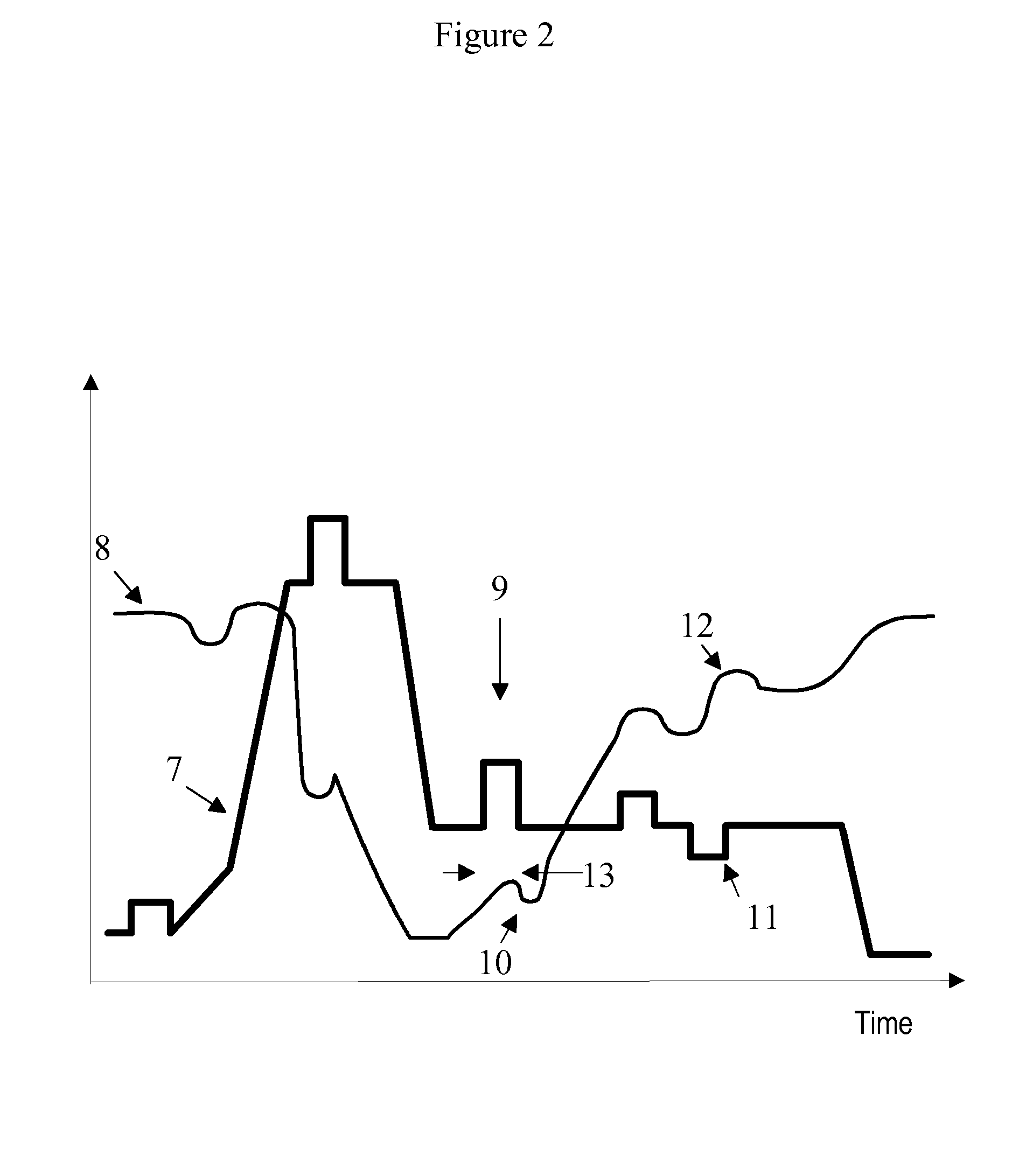Automatic calibration of the sensitivity of a subject to a drug
a technology of automatic calibration and sensitivity, applied in the field of automatic calibration of the sensitivity of a subject to a drug, can solve the problems of patient knowing or sensing, traumatic experiences, loss of reflexes, etc., and achieve the effect of improving patient safety and reliability
- Summary
- Abstract
- Description
- Claims
- Application Information
AI Technical Summary
Benefits of technology
Problems solved by technology
Method used
Image
Examples
Embodiment Construction
[0033]Reference will now be made in detail to the embodiments of the present invention, examples of which are illustrated in the accompanying drawings.
[0034]An embodiment of the method for calibrating the sensitivity of the patient is depicted in a block diagram in FIG. 1. In the method, the patient is given a drug by infusion at an infusion rate I and the response of the patient to the drug is measured 2. The drug may be any drug that has a measurable effect on the patient, e.g. a blood pressure drug, an anesthetic drug or a muscle relaxant or such. The measured signal can be any signal that is responsive to the given drug. For example, when giving muscle relaxants, electromyogram (EMG) of the patient is measured from a chosen part of the body or in the case of an anesthetic drug, the depth of anesthesia is measured.
[0035]To be able to determine the sensitivity of the patient to the drug in question, the patient is given small additional boluses of the drug and / or the infusion rate...
PUM
 Login to View More
Login to View More Abstract
Description
Claims
Application Information
 Login to View More
Login to View More - R&D
- Intellectual Property
- Life Sciences
- Materials
- Tech Scout
- Unparalleled Data Quality
- Higher Quality Content
- 60% Fewer Hallucinations
Browse by: Latest US Patents, China's latest patents, Technical Efficacy Thesaurus, Application Domain, Technology Topic, Popular Technical Reports.
© 2025 PatSnap. All rights reserved.Legal|Privacy policy|Modern Slavery Act Transparency Statement|Sitemap|About US| Contact US: help@patsnap.com



